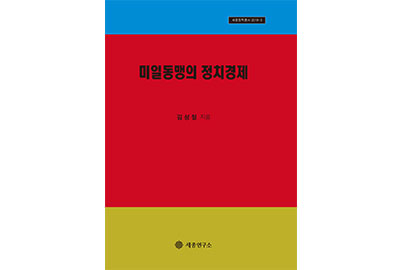The international affairs in East Asia have been marked by intensified confrontation and conflict through the hegemonic competition of the two sides, the strengthened U.S.-Japan alliance and rising China. While the countries value peace and stability in the region and emphasize dialogue and cooperation, the existing hegemon, the U.S. along with Japan have seriously engaged in a hegemonic competition with the new challenger China in many aspects, including security and economy. Korea stands between the two sides, faced with the dilemma of middle power diplomacy of balanced liaison – hard to depend solely on one side.
The U.S. East Asia strategy, countering China, pins U.S.-Japan alliance down in a quintessential position. The Abe cabinet strives to enhance U.S.-Japan alliance, strengthen military capabilities, and rebuild the economy, putting forth active pacifism as the pivot of its foreign and security policy. It pursues the endorsement of collective security through the ‘legislation for peace and security,’ the ultimate transformation to a normal country through constitutional amendment, and the economic policy dubbed as ‘Abenomics’ to back them with financial support. For the Abe administration’s foreign and security policy to be carried out smoothly, the U.S. support plays a crucial role based on the bilateral alliance.
Recently, the U.S.-Japan relations have been shaped with the perception of the strategic need for mutual cooperation. Beyond the active bilateral security cooperation, the two countries have continued with economic cooperation centered on trade, investment, joint research and development, consortium, and mergers. They have adopted cooperation-first policy in political economic terms, taking a strategic and practical stance.
Grounded on the robust alliance against China’s ascent, the U.S. and Japan pursue a foreign and security policy with holding China in check. Accordingly, East Asia has witnessed a confrontational structure of multilateral cooperation networks between the U.S. and Japan on one side and China on the other. Hence, the state of affairs in East Asia has shifted with the U.S.-China-Japan trilateral relations at the core and the U.S. and Japan have shifted their policy on China. Especially, amid the serious conflict of interests surrounding the territorial dispute in the East and South China Seas and the North Korean nuclear issue, the U.S.-Japan cooperation have unfolded in various ways. As the Trump administration took over the White House, the U.S. foreign policy is inclined toward trade protectionism, neo-isolationism, and selective engagement. The attention now heads to how the U.S.-Japan relations will change in the era of Trump. This study examines the hegemonic competition between the U.S.-Japan alliance and China’s rise which defines the political dynamics in East Asia from security and economic points of view. It delves into U.S.-Japan alliance in the historical context, and analyzes the cases of cooperation and confrontation in security and economy in detail. Additionally, it will suggest an outlook on the changes that will occur for the strengthening U.S-Japan alliance and U.S.-Japan relations in the era of Trump. Moreover, the study propounds South Korea’s foreign policy and security strategy in the midst of changing East Asian political landscape. It scrutinizes the security aspect of U.S. cooperation and changes in bilateral ties centered on the East and South China Seas, and the economic aspect of the strategy of economic diplomacy of cooperation and competition between the two countries including trade, investment, research, development, and joint ventures.
Volume: 2018-3
Publisher: The Sejong Institute
Publication Date: March 30, 2018
Paperback, 301 pages

